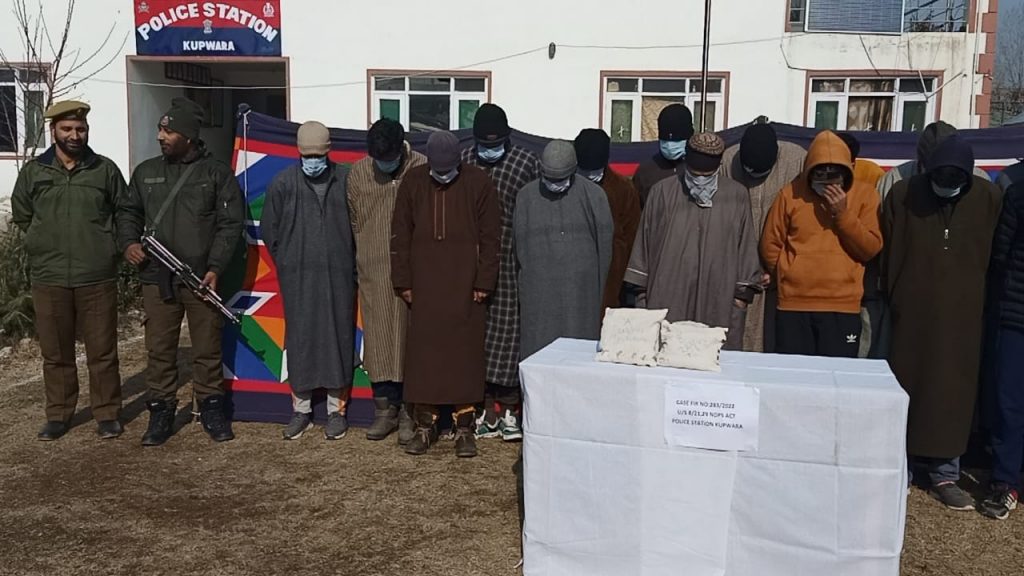
One of the major reasons behind the problem of rising drug abuse in the valley is the political conflict of the past over three decades which is taking its toll on the youth. According to latest figures, more than six lakh educated youth are without job in the valley, writes Riaz Wani
In recent years, drug addiction has assumed enormous proportions in Kashmir. The scale of the problem is apparent from the fact that over 5,000 cases have been registered under anti-narcotics laws between 2019 and 2022. And overall, nearly a million people, or roughly 8 percent of the region’s population, reportedly use drugs, including cannabis, opioids, and sedatives.
According to a study conducted by the Institute of Mental Health and Neurosciences-Kashmir (IMHANS-K), heroin addiction accounts for 2.23 percent of all substance dependence cases, affecting people from diverse backgrounds, including educated middle-class families and working-class households. The majority of addicts, aged between 20 and 30, initially start with medical opioids before transitioning to intravenous heroin use, often resulting in the contraction of hepatitis C virus due to needle sharing.
The study, titled “Prevalence and pattern of substance use in 10 districts of Kashmir,” reveals that the economic burden of heroin addiction is immense, with addicts spending an average of Rs 88,183 per month on heroin consumption alone. As their addiction deepens, the cost increases, forcing many to resort to desperate measures such as theft, selling personal belongings, and taking on debts. In their relentless pursuit of drugs, some individuals even engage in drug trafficking activities
Apart from the direct financial strain on individuals and their families, the healthcare costs associated with heroin addiction are substantial. The study highlights that only 35.1 percent of Injecting Drug Users (IDUs) have undergone screening for hepatitis C virus, primarily due to the high cost of approximately Rs 3,000 per test. This lack of awareness about free treatment for hepatitis C in government-run hospitals further exacerbates the problem.
The authorities have expressed concern over the inflow of drugs from Pakistan, facilitated by smugglers, touts, and even the use of drones. Additionally, drug dealers from Punjab and Himachal Pradesh are reportedly supplying drugs to the Valley through various channels. In 2022, Jammu and Kashmir police registered approximately 100 cases under the Narcotic Drugs and Psychotropic Substances Act, leading to the arrest of 1,560 individuals.
On June 6, Jammu and Kashmir Police seized property worth lakhs of a drug peddler Khursheed Ahmad Waza alias Mandela at Bandipora. The property included a residential plot measuring 1 Kanal, 1.5 Marlas worth a market value of Rs 44 lakh and two vehicles worth Rs 12 lakh.
The past survey has revealed that 65 to 70 percent of the student community in Kashmir has taken to drugs and shockingly enough it includes 26 percent of female students too. More than 70 percent of addicts have been found to fall in the age group of 18-35 years.
Drugs being used include prescription medicines such as Codeine Phosphate syrup, Spasmo-Proxyvon, Benzodiazepine (Valium) and Alprax. Some even get their fix from sniffing commonly available solvents like Fevicol.
However, it is not difficult to see what is leading the youth towards the drugs. One major reason is the political conflict of the past over three decades which is taking its toll on the youth. According to unemployment figures, more than six lakh educated youth are without jobs. There is also a huge number of the uneducated and unskilled youth who are looking at a bleak future. The reigning political uncertainty and the humanitarian fallout of the past three decades have only reinforced the sense of hopelessness, leading youth to ease their frustration through drugs.
Civil society groups are asking for increasing investments in job creation and skill development programmes which are expected to offer a sense of purpose and economic stability to the population. Individuals are less likely to turn to drugs as an escape, if root causes of addiction are addressed.
“Bolstering mental health services and providing accessible support systems will help individuals cope with trauma and reduce their susceptibility to substance abuse,” read an editorial in a local daily. “The sharp increase in the number of patients seeking treatment for drug addiction, from 10-15 cases a day a decade ago to 150-200 cases a day now, underlines the urgent need for action.”












